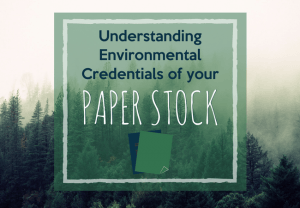 Paper Sustainability in catalogue, brochure and magazine printing
Paper Sustainability in catalogue, brochure and magazine printing
I think most people will consider that brochure printing, magazine printing and catalogue printing is not a naturally environmentally friendly process. To be simplistic – we chop down a tree, use water from the local river to pulp it, dig out some minerals from the ground and add it to the mix and ta-dah…we have paper. We then transport this paper across the world to printers who then use vegetable oil and pigments on the surface, which is then again, shipped around the world for the end user to read. Once finished with, the printed product is burnt, sent to landfill or, if lucky, recycled. So much for paper sustainability!
This is an extremely simplistic view but until recently, this was actually pretty much what the print cycle consisted of only without corporate or social responsibility which is now ingrained within the print industry. It has only been a few years since printers started to use vegetable based inks….some still don’t!
With regards to the paper element of the magazine and brochure printing process, the move towards sustainability began with specifically harvested trees. Sustainable Forests were created – meaning the mills planted more trees than were felled. The majority of paper now used in the UK is from sustainable forest stocks. As the industry woke up to environmental issues and their responsibility to uphold standards, along came environmental accreditation programmes such as ISO14001 and EMAS.
The following are the most common programmes to be aware of:
FSC – the Forests Stewardship Council
This group have set out standards and principles which outline precisely what is required in high level responsible forest management. By becoming FSC accredited, wood based products can then carry the FSC logo and in turn allows consumers to know that the item has been certified as coming from a well-managed forest and to make an informed choice about the products they use. This non-profit group is made up of environmentalists, industry, foresters and indigenous and social groups.
PEFC
The Program for the Endorsement of Forest Certification schemes, is a non-profit organisation, promoting sustainability through managing forests. This non-government body provides reassurance to companies involved in the purchasing of wood and paper products that they are promoting the sustainable management of forests.
ISO 14001
This is a voluntary, international standard. It provides business management with a framework and tools for a systematic approach to environmental management. This certification standard is set by the International Organisation for Standardization in Switzerland. Around the same time a number of other organisations were created to enable consumers to identify that the products they were buying or using were coming from environmentally sound sources and these were known as the FSC and the PEFC.
EMAS – Eco Management and Audit Scheme:
This is a management level process whereby a company undertakes out sustainability surveys, creates a sustainability policy and puts in a place a companywide environmental management system (this could be ISO 14001). Audits are carried out and consequently published in an ecological annual report which are then monitored by independent assessor.
These days the difference in cost between accredited and non-accredited paper is ever diminishing as demand increases so does supply. It is not difficult to foresee a time when all paper will be either FSC or PEFC accredited. Any printer can supply you with either FSC or PEFC paper which is produced by ISO14001, EMAS accredited mills for your brochure, magazine or catalogue printing. But only by using FSC and PEFC accredited printers can you then use the respective logos from these two organizations on your printed material. It is these logos that consumers recognize for the environmental credentials and therefore by association your company is seen to be environmentally conscious. A reputable and quality print business should be ISO14001 and FSC/ PEFC accredited. This is your guarantee that your print is being produced in an environmentally sound manner.
So, what is difference between recycled and sustainable paper stock?
100% Recycled paper is formed from pre or post-consumer waste and not from felling trees. In general, the waste is mixed with water and chemicals and the chopped to break down the fibres to form a pulp. This pulp is then purified through a process of cleaning, straining, de-inking and bleaching until it is ready to be made into a recycled paper.
Sustainable paper is made from wood sourced from managed forests. So when each is tree felled a few more are replanted. This has resulted in forest growth in Europe of 30% since 1950.
So the argument is which is truly more environmentally friendly? 100% recycled paper whose process involves re-using consumer waste but using fairly harsh chemicals to regain the expected ‘white’ appearance of paper, or sustainable paper using trees from a sustainable forest source?
What sustainable paper stocks can we provide?
All coated and uncoated house sheets used in Cliffe Enterprise brochure, magazine and catalogue printing are FSC mixed sources accredited. This means the stock contains one or more of the following:
Virgin timber or fibre from a FSC sustainably certified forest
Reclaimed or recycled timber and/or fibre
Virgin timber or fibre from controlled sources
Due to our working relationships with the paper companies, we are able to source all types of recycled stock in addition to our standard FSC sheet.
For all of your brochure printing, magazine printing and catalogue printing needs, please contact Simon at [email protected] or call 01323 419701